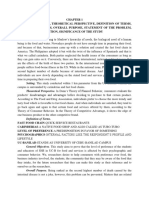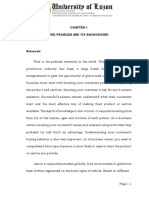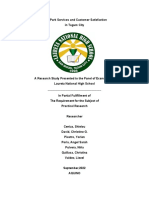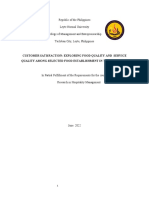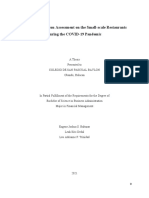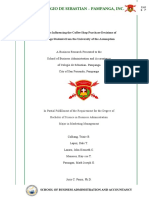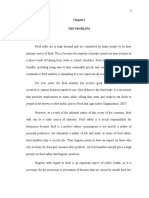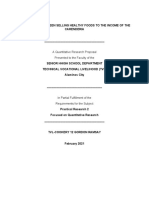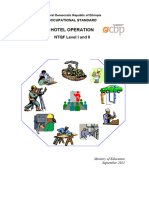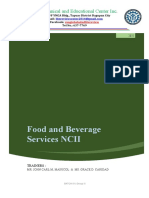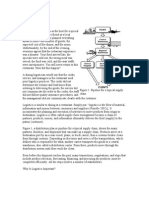0% found this document useful (0 votes)
2K views30 pagesThe Level of Interest Between Small Scale and Large Scale
This document discusses a study conducted on the level of interest between small-scale and large-scale food chains among students at Polytechnic University of the Philippines. It begins with an introduction describing the different types of food chains located near campus, including small street vendors and food stalls as well as large fast food chains. The problem statement indicates the study aims to determine student preferences between small and large food chains and the factors influencing their decisions. The rest of the document provides definitions of key terms, the significance of the study, and its scope and limitations. It also includes a review of related local literature on street foods and carinderias in the Philippines.
Uploaded by
Ciel KimCopyright
© © All Rights Reserved
We take content rights seriously. If you suspect this is your content, claim it here.
Available Formats
Download as PDF, TXT or read online on Scribd
0% found this document useful (0 votes)
2K views30 pagesThe Level of Interest Between Small Scale and Large Scale
This document discusses a study conducted on the level of interest between small-scale and large-scale food chains among students at Polytechnic University of the Philippines. It begins with an introduction describing the different types of food chains located near campus, including small street vendors and food stalls as well as large fast food chains. The problem statement indicates the study aims to determine student preferences between small and large food chains and the factors influencing their decisions. The rest of the document provides definitions of key terms, the significance of the study, and its scope and limitations. It also includes a review of related local literature on street foods and carinderias in the Philippines.
Uploaded by
Ciel KimCopyright
© © All Rights Reserved
We take content rights seriously. If you suspect this is your content, claim it here.
Available Formats
Download as PDF, TXT or read online on Scribd
/ 30


